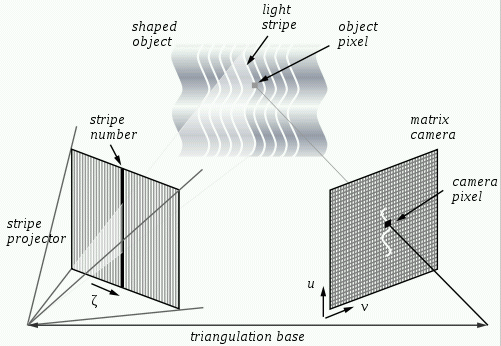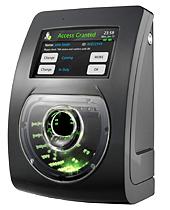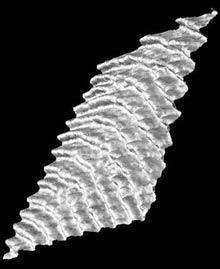3D fingerprints
The technique of fingerprinting has not changed much over the past 60 years, despite the transition to digital scanners. The prints are still removed, stored and collated in a two-dimensional form. And this is a big problem, because it often leads to false positives. In professional forensic journals, the proportion of false positives is estimated at 0.8%, and in some years up to 4.4%,  but the authorities prohibit the disclosure of these statistics, so as not to question the reliability of identification by fingerprints, because even a few tenths of a percent are hundreds of unfair convictions. One way or another, the fingerprinting technology clearly needs to be improved.
but the authorities prohibit the disclosure of these statistics, so as not to question the reliability of identification by fingerprints, because even a few tenths of a percent are hundreds of unfair convictions. One way or another, the fingerprinting technology clearly needs to be improved.
Some time ago, the US Department of Homeland Security issued grants to several dozen private companies that promised to provide technology for contactless fingerprinting in a three-dimensional form. Two startups succeeded in this: Flashscan 3D (a subsidiary of the University of Kentucky) and TBS Holdings (from Carnegie Mellon University).
Both companies use the scanning method of structured light , that is, a grid of light lines, by the reflection of which you can create a three-dimensional model.

')
Three-dimensional scanning allows you to greatly speed up the procedure (scanners of both manufacturers spend less than one second on a finger, and in the future, the developers promise to increase the speed to 0.1 s, so that you can scan all ten fingers at a time), reduces the scanning defect (since there is no with a scanner, there is no risk of contaminating the surface of the glass or smearing the print, accidentally pulling a finger). TBS Holdings production scanner looks like this.

TBS Holdings has released two scanner options: one-finger and ten-finger. True, tenfinger actually works in two passes, because he scans his thumbs up separately.
A 1.4-megapixel camera is hidden inside the Flashscan scanner, giving a resolution of about 150 pixels per square centimeter. The scan quality of both manufacturers is also about the same.
The fingerprint is stored in the database as a three-dimensional model.

Interestingly, such images are quite compatible with the existing FIS database (Automatic Fingerprint Identification System) FBI, for this Flashscan program can specifically flatten 3D models to a flat view.
via Singularity Hub
 but the authorities prohibit the disclosure of these statistics, so as not to question the reliability of identification by fingerprints, because even a few tenths of a percent are hundreds of unfair convictions. One way or another, the fingerprinting technology clearly needs to be improved.
but the authorities prohibit the disclosure of these statistics, so as not to question the reliability of identification by fingerprints, because even a few tenths of a percent are hundreds of unfair convictions. One way or another, the fingerprinting technology clearly needs to be improved.Some time ago, the US Department of Homeland Security issued grants to several dozen private companies that promised to provide technology for contactless fingerprinting in a three-dimensional form. Two startups succeeded in this: Flashscan 3D (a subsidiary of the University of Kentucky) and TBS Holdings (from Carnegie Mellon University).
Both companies use the scanning method of structured light , that is, a grid of light lines, by the reflection of which you can create a three-dimensional model.

')
Three-dimensional scanning allows you to greatly speed up the procedure (scanners of both manufacturers spend less than one second on a finger, and in the future, the developers promise to increase the speed to 0.1 s, so that you can scan all ten fingers at a time), reduces the scanning defect (since there is no with a scanner, there is no risk of contaminating the surface of the glass or smearing the print, accidentally pulling a finger). TBS Holdings production scanner looks like this.

TBS Holdings has released two scanner options: one-finger and ten-finger. True, tenfinger actually works in two passes, because he scans his thumbs up separately.
A 1.4-megapixel camera is hidden inside the Flashscan scanner, giving a resolution of about 150 pixels per square centimeter. The scan quality of both manufacturers is also about the same.
The fingerprint is stored in the database as a three-dimensional model.

Interestingly, such images are quite compatible with the existing FIS database (Automatic Fingerprint Identification System) FBI, for this Flashscan program can specifically flatten 3D models to a flat view.
via Singularity Hub
Source: https://habr.com/ru/post/72486/
All Articles